26 Small-Space Dos and Don'ts That Can Make or Break a Design
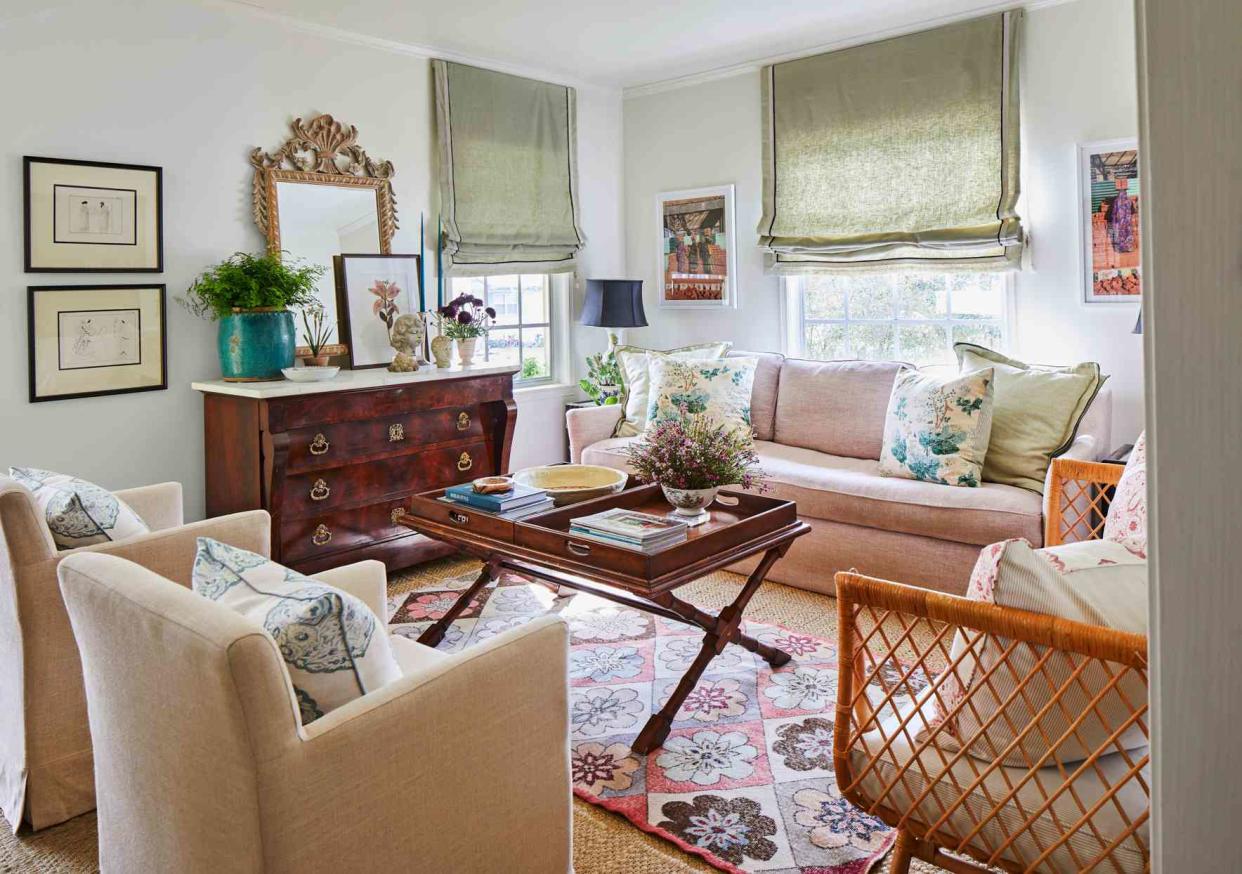
Small spaces can be difficult to decorate, but they pack a lot of potential. You might be surprised by how much style and function you can fit into a small home with the right strategies. Start with these dos and don'ts to learn how to make the most of small rooms.
Do: Design Around Your Needs
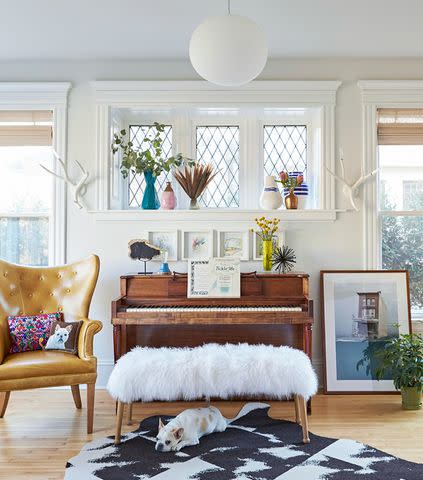
Every small room comes with distinct challenges and assets, and when it comes to decorating, each person will have unique ideas about how a space should look and function. So tune into your home's attributes and proceed wisely, discerning what will work for you, and how you can adapt ideas for decorating a small space to suit your needs.
Don't: Push All the Furniture Against the Walls
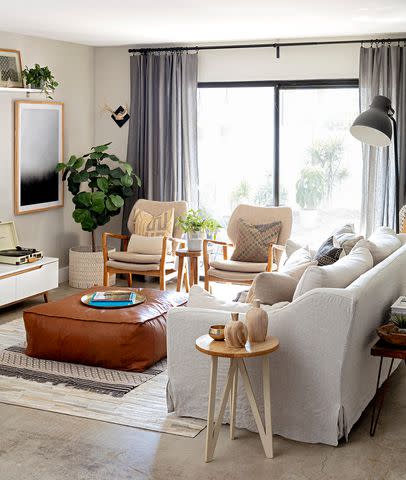
Leaving an open space in the middle of your living room can actually make a small space feel closed in. Arranging furniture in the center of the room increases the warmth and makes carrying on a conversation easier. Pulling furniture away from the walls (even just a few inches for a floor lamp or sofa table) creates an illusion of greater depth and more space.
Do: Use Small-Space Furniture
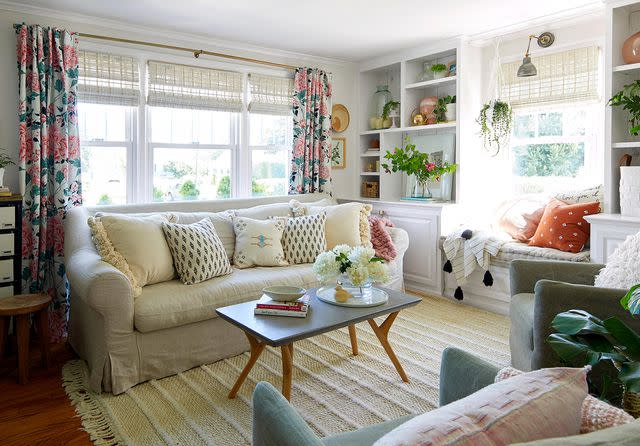
Choose furniture that will help you maximize limited square footage. Here are a few types to look for when shopping:
Love seat: A short sofa made for two. Pullout models accommodate overnight guests so your living room can pull double-duty.
Armoire: A tall cabinet originally used as a wardrobe; it can also hide a bar or games and books.
Sofa table: Also called a console table, it's narrow and slightly lower than the sofa back. This makes it a good spot for a reading lamp.
Parsons chair: A slim, armless, upholstered piece that can adapt to different rooms and styles.
End or side table: About chair-arm height, it stands beside seating to hold a lamp, a beverage, and other necessities.
Don't: Be Afraid to Put Your Bed in Front of a Window
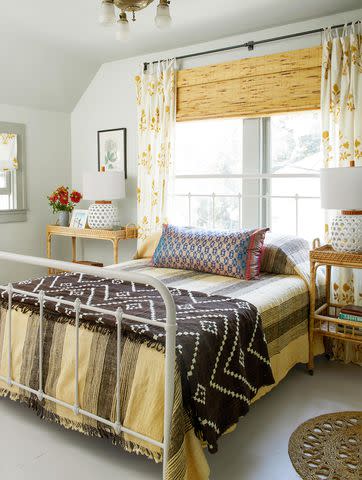
In small bedrooms, placing your bed in front of a window is sometimes the only option when you want to squeeze in dressers and nightstands—and it's not always a furniture-arranging mistake. Situating your bed by a window can create a strong focal point that distinguishes the room.
Don't: Overdress Windows
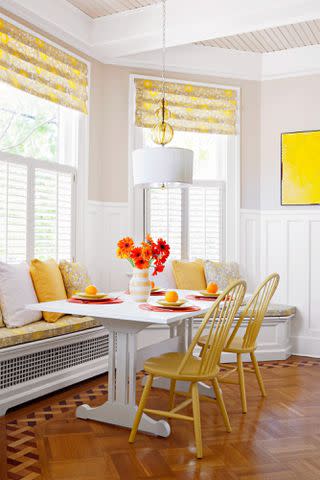
Simple window treatments are often better in small rooms. Blinds or Roman shades offer an unfussy solution, providing privacy and light control during the day without appearing visually heavy. Simple drapery panels can also soften the architecture of the room without crowding the space.
Don't: Overwhelm with Color
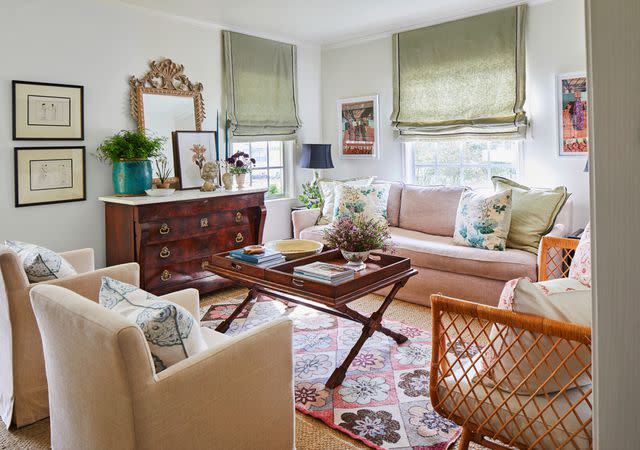
Living room color schemes don't have to be wild and crazy to be impactful. Subdued colors and patterns, as shown in this living room, are often more effective in making a small room feel larger. Start with a neutral foundation, and bring in muted shades through rugs, wall art, throw pillows, and other accessories.
Do: Use Smart Arrangements
The right furniture arrangement can make a small room feel so much larger. Bedrooms often contain a lot of bulky furniture, so placing it all correctly is especially important. Watch these smart strategies for a perfect furniture arrangement in a small bedroom.
Do: Use Window Treatments to Your Advantage

A few easy tricks can make your window treatments work to your advantage in a small room. Hanging curtains just below the ceiling, for example, can make windows appear taller. To widen windows visually, extend the drapes beyond the window frames.
Don't: Rule Out Certain Colors
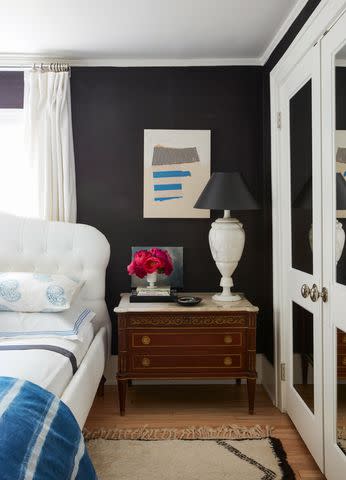
Dark colors have a reputation for making small rooms feel smaller. But if comfort is the mood you're going for in your bedroom, deep, saturated shades make a great choice. To avoid a cave-like effect, pair a dark wall color with crisp white trim.
Do: Consider Open Shelving
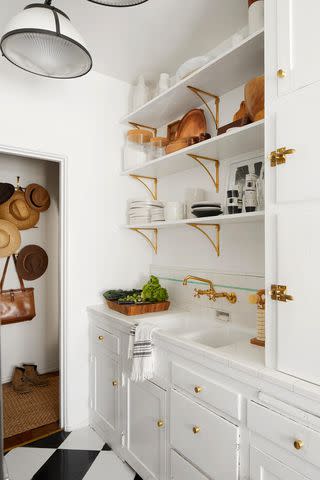
Without the visual heaviness of doors, open shelving can make even a tiny kitchen feel larger. You can easily convert existing cabinets to open shelves by removing the doors. If you're still not sold on open shelving, cabinet doors with glass fronts create a similar effect.
Do: Embrace Sconces

Wall sconces are a smart lighting idea for small spaces, because they bring a lot of style without taking up much space. In a bathroom, light from sconces can soften cold, hard surfaces and provide extra illumination where you need it most. Mount one on either side of the vanity mirror for even, flattering lighting.
Do: Create an Entryway
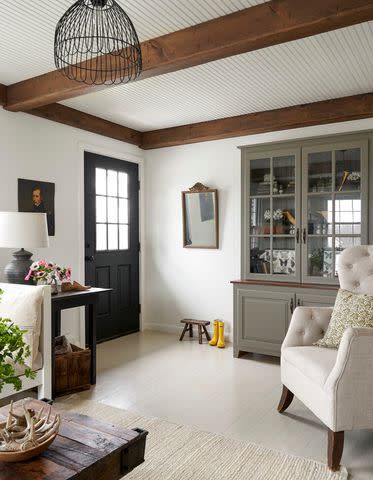
Does your front door open straight into the living room? Add a console table or cabinet and layer in artwork and accessories. The vignette will create a pause between the door and the living room area, giving the illusion of an entryway, while providing an opportunity for extra storage.
Don't: Ignore Awkward Spaces
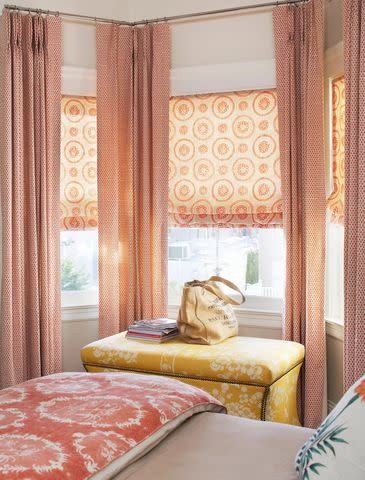
Small homes require you to make the most of every space, even in the awkward-shaped areas that can be difficult to decorate. For example, consider updating a bump-out or bay window area with a built-in window seat and comfy pillows. For a less permanent solution, simply slide a bench or chair into the nook to create a relaxing seating area.
Do: Use Large-Scale Patterns
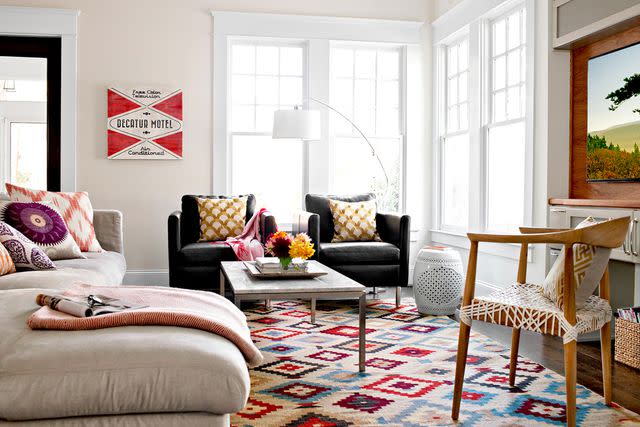
Large patterns can make a big statement in small spaces. Just soften the impact by using them on or near the floor. A boldly patterned rug, for example, is below eye level, so it won't overwhelm the room.
Do: Connect with Color
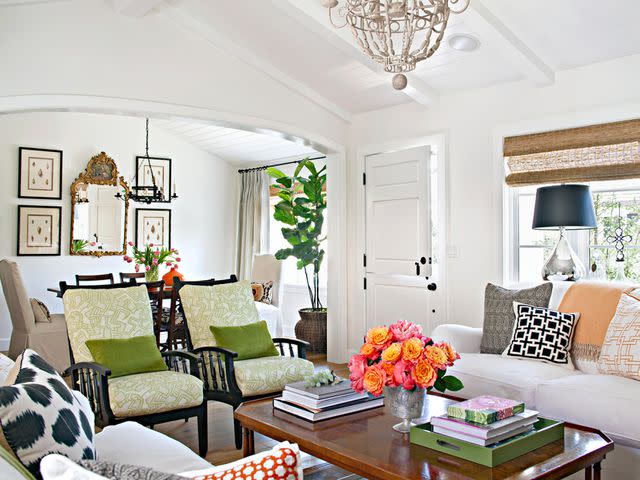
A consistent color scheme is often the simplest and most effective unifying thread in a small home. That doesn't mean all your walls have to be the same shade, but when physical distance between spaces is minimal, subtle and gradual color changes usually work best to maintain openness. If you do opt for multiple wall colors, keep the moldings and trim the same color.
Don't: Forget About Mirrors
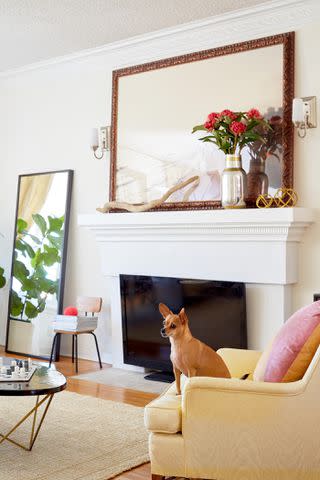
Mirrors are a simple small-space design trick that you can use in nearly any room. They reflect light, which gives the illusion of more space, while adding a bit of sparkle. Lean a mirror against a wall for an easy alternative to hanging that's perfect for renters.
Do: Use Solid Colors
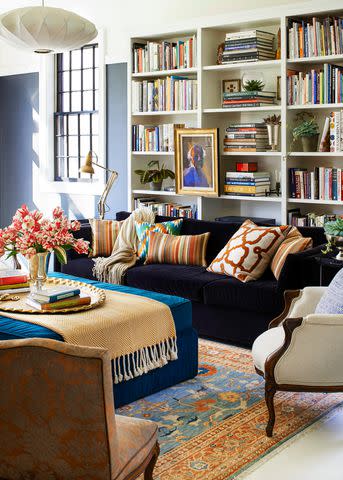
Large planes of solid color give you the freedom to use patterns in smaller splashes without going overboard. Choose solid-color fabrics for large pieces like sofas, and opt for painted walls over busy wallpaper. Then bring in patterns more subtly through accent furniture, throw pillows, and other accessories.
Don't: Resign Hope
Even the smallest of bedrooms can have a sense of style, comfort, and function. The one in this tiny apartment is no exception. Watch to learn small-space design tricks you can use to recreate the look.
Don't: Ignore Vertical Bathroom Space
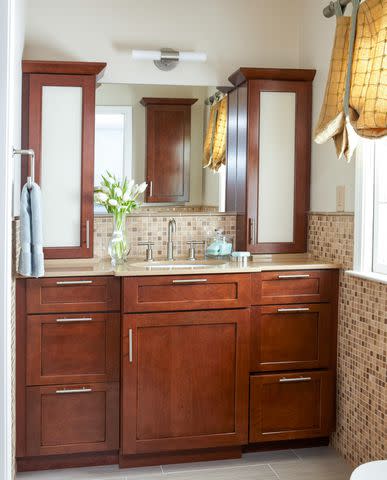
Use vertical space to your advantage in small bathrooms. Tall freestanding units can add much-needed storage. If you're remodeling, consider a cabinet that sits on the countertop and won't take up floor space.
Don't: Forget the Headboard

Headboards take up so little room, but have such visual impact. In small bedrooms, taller headboards introduce a vertical element that can help enlarge the sense of space. Choose a design that complements your wall color, so the large scale doesn't appear jarring.
Do: Include Multiple Light Sources
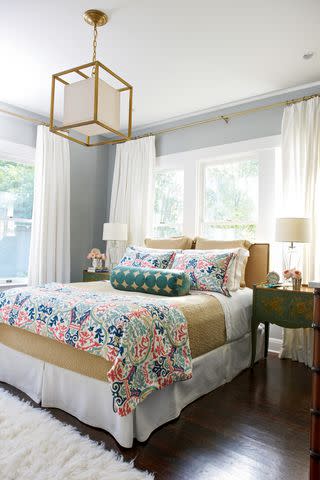
Rooms larger than six feet squared (a 6x6 room) benefit from multiple light sources. Kick off your lighting with an overhead fixture (ideally, one with multiple bulbs). Illuminate dark areas with additional wall-mount and tabletop fixtures. To maximize lighting, place fixtures diagonally to cancel shadows and add to the overall brightness.
Don't: Stick Just to Solid Furniture
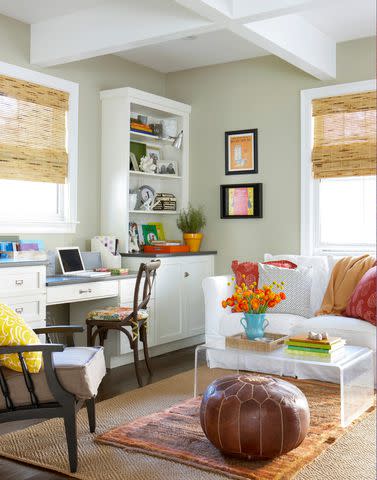
Dark, heavy furniture can visually weigh down a small room. Opt for more lightweight solutions that won't block sight lines or light. Leggy furniture pieces, glass tabletops, and see-through furnishings will make a room seem less full.
Do: Scale Down Furniture
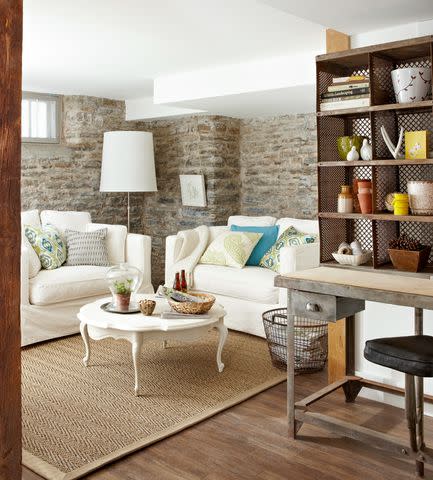
If faced with the option of one bulky sectional or two smaller loveseats, two trumps one almost every time. A pair of loveseats can provide just as much seating as a clunky sofa and take up less visual space. This might also give you more arranging options to play with.
Don't: Rule Out Built-Ins
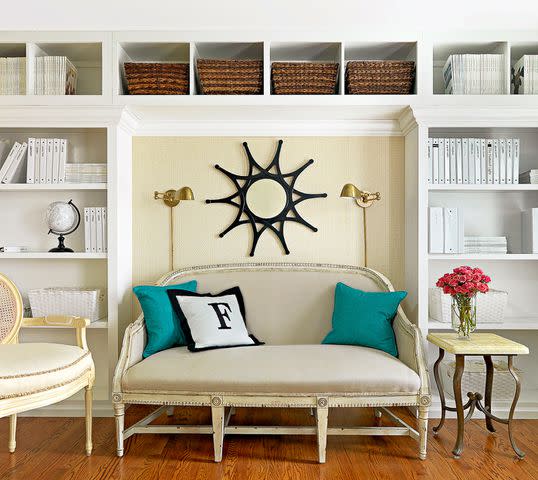
Adding built-ins can be a smart storage option, even if your space is small. Think about your needs and design accordingly. Here, shelves add storage, but also create space for a small settee.
Do: Go Armless
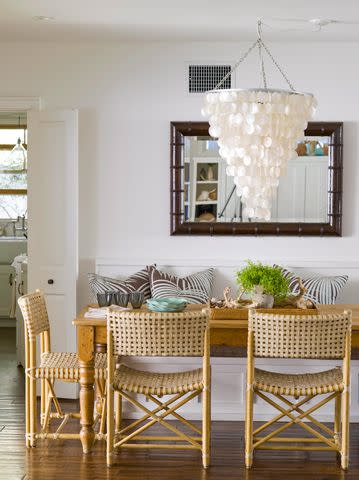
For a small dining room, choose low-profile seating that offers comfort without bulk. For example, armless chairs that can slide under the dining room table will offer more floor space. Backless stools at a kitchen island or countertop follow the same principle.
Don't: Say No to an Island
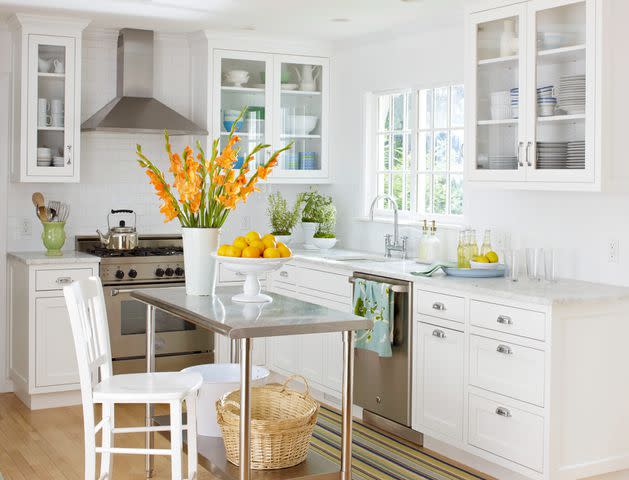
Small kitchens might not have room for a built-in island, but an open cart might be your answer to more storage and workspace. Measure your kitchen and choose a size that leaves plenty of room for flow. For added flexibility, look for a cart on wheels, so that it can be moved around as needed.